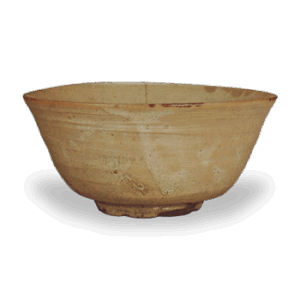There are two types of etsuke, one on the surface of the glaze and the other underglaze. The former is called overglaze painting and the latter is called underglaze painting. The operations can be roughly classified into the following several types. There are two types of brush painting, namely, “brush painting” and “copperplate painting,” “lithograph painting,” “photographic transfer,” “rubber plate painting,” “blow-drying painting,” and “waving-drying painting. The most common method of brush painting is to use a brush to dip the surface of a ceramic ware in mud plaster, a mixture of fine pigment powder and water, and then paint the surface. However, underglaze painting, or underglaze painting, requires a quick brushstroke, because the base material is water absorbent, and if pigment fine powder is simply mixed with water, the water will suddenly absorb and the brushstroke will not be free. In addition, depending on the type of pigment, a portion of the pigment may leak out when the glaze melts, making the brushstrokes indistinct. In order to eliminate these problems, a thin layer of chalcoferrite-rich material is applied to the surface of the base. This not only slows water absorption and facilitates brushstrokes, but also prevents pigments from leaking out during firing. In addition, if pigments are mixed with oil or glue and painted with a brush, the brush strokes can be more flexible. In the case of overglaze painting, if overglaze pigments are simply mixed with water, not only will the pigments not be evenly dispersed because of the smoothness of the glaze surface, but the water contained in the pigments may run off into areas where the brush does not carry them. To prevent this from happening, use mud plaster or apply a thin layer of water on the entire glazed surface, let it dry, and then use the above-mentioned pigment mud plaster for the brushstrokes. As in the case of underglaze painting, overglaze pigment may be mixed with various oils and fine powders, or it may be applied over the glaze and fired, and then painted with a brush to produce a gold or silver color. For details on copperplate etching, lithographic etching, fukigake etching, furikake etching, etc., see the respective sections. The word “etsuke” mainly refers to overglaze enamels and is also called “yakitsuke” (burnished) in reference to the underglaze enamels of underglaze dyeing.








